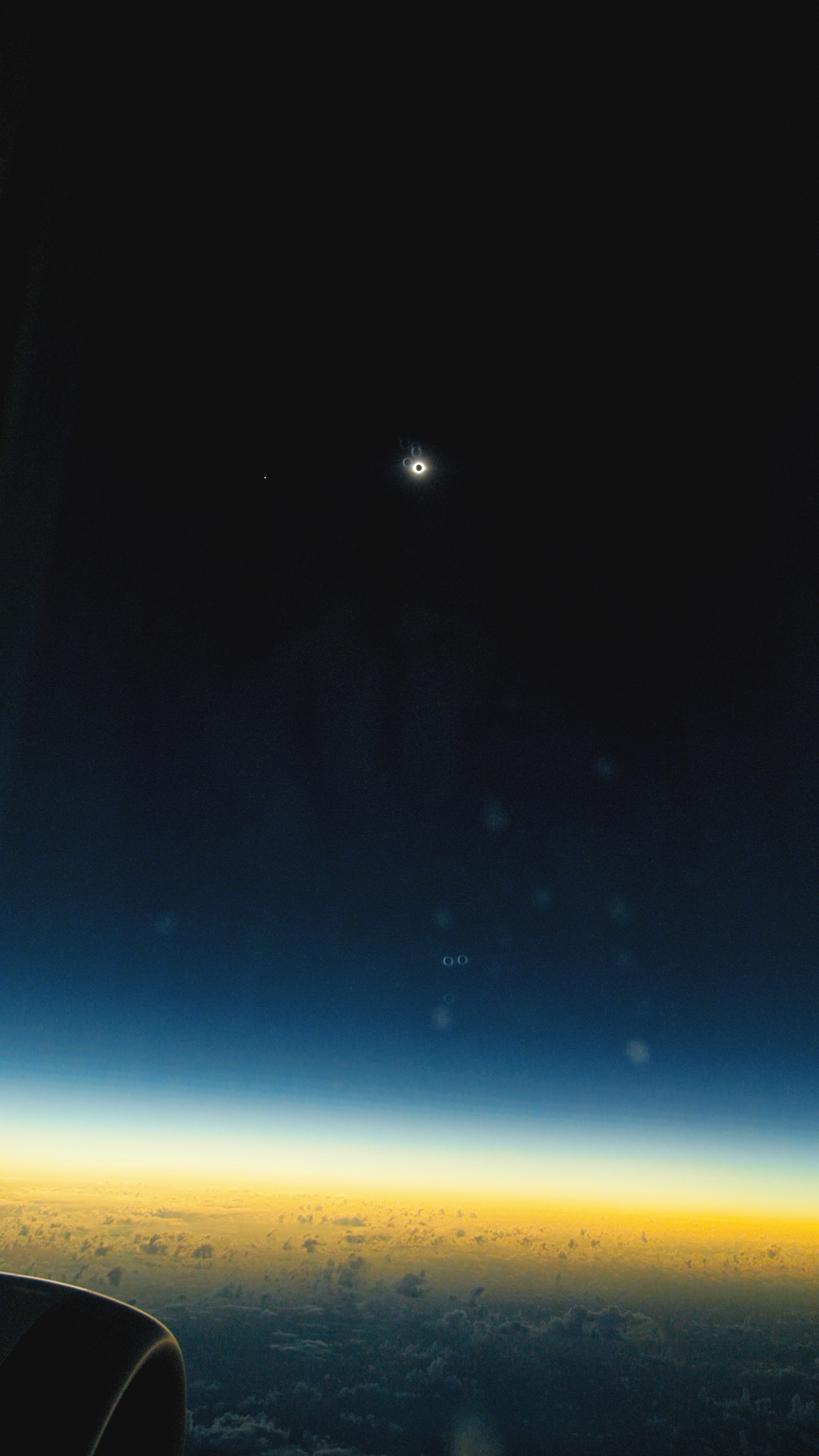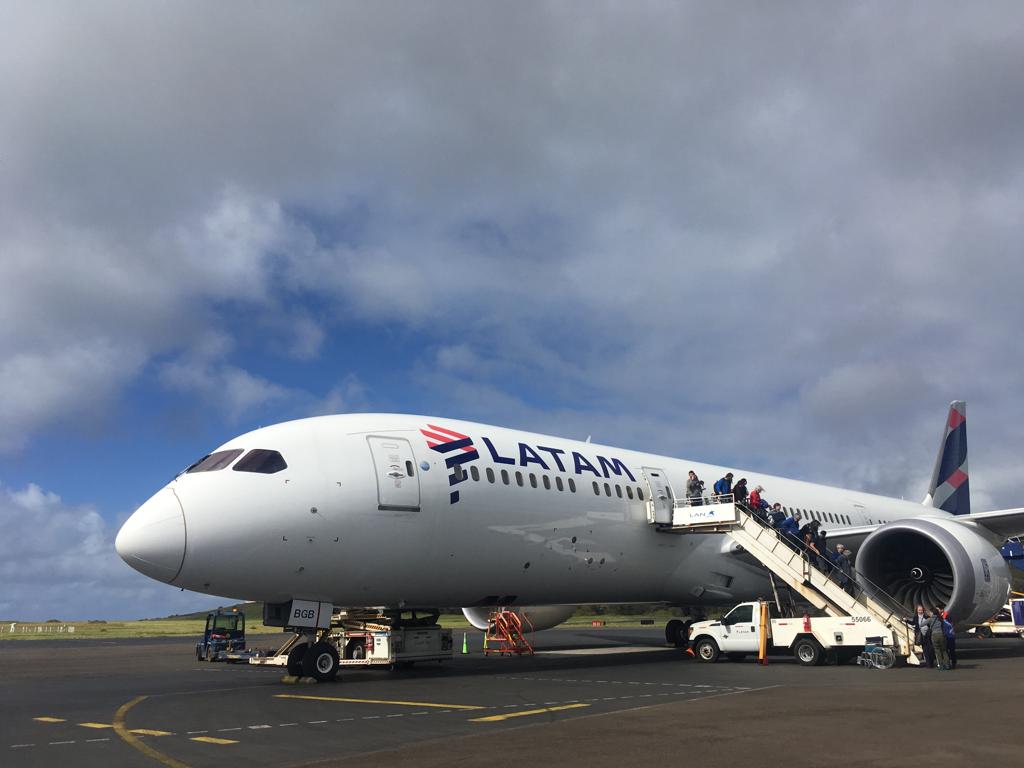How Yesterday's Total Solar Eclipse Looked From a Plane (Photos, Video)
The webcast views were good, but they couldn't compare to this.
More than 50 people got a bird's-eye view of yesterday's (July 2) total solar eclipse aboard a special flight operated by Chile-based airline LATAM.
The flight took off from Easter Island, about 2,200 miles (3,540 kilometers) off the Chilean coast, and chased the moon's shadow as it rolled eastward across the Pacific. This strategy allowed passengers to observe totality for more than 8 minutes, compared to the 2.5 minutes that people in southern Chile and Argentina got. (The event was visible only to people along a narrow path in those two countries, though most of South America was treated to a partial solar eclipse.)
Related: Best Photos of the 2019 Total Solar Eclipse
"At LATAM, we are committed to showcasing the best of Latin America to the world, and we are proud that the leading eclipse chasers chose us as the airline to follow the path of this phenomenon on a unique flight over the Pacific that took off from the remotest place on the planet, Easter Island," Yanina Manassa, customer service director for LATAM Airlines Group, said in a statement.

One of those chasers was Glenn Schneider, a University of Arizona astronomer who helped to plan the flight. Schneider witnessed his 35th total solar eclipse yesterday — a Guinness World Record, according to LATAM representatives.
Yesterday's flight involved a LATAM Boeing 787 Dreamliner, which departed Easter Island at 9:50 a.m. local time (11:50 a.m. EDT; 1550 GMT). The plane flew northwest for 2.5 hours to get into the path of totality, then followed the moon's shadow across the Pacific at 560 mph (900 km/h), at an altitude of about 41,000 feet (12,500 meters), according to LATAM representatives. The plane landed back on Easter Island about 5.5 hours after taking off.
Breaking space news, the latest updates on rocket launches, skywatching events and more!
The skywatching spectacle was the first total solar eclipse since the "Great American Solar Eclipse," which crossed the United States from coast to coast in August 2017. The next total solar eclipse won't occur until December 2020, and southern Chile and Argentina are in the crosshairs for that one as well.
The mainland United States won't play host to a total solar eclipse again until April 2024.

LATAM worked with scientists and trip organizer T.E.I. Tours & Travel for more than two years to plan yesterday's flight, airline representatives said. LATAM will offset the flight's carbon emissions via a reforestation project in southeastern Peru's Madre de Dios region, they added.
Charter flights are an established strategy for eclipse chasers who want to get the most out of these rare and spectacular events. (Total solar eclipses occur once every 18 months on average.) For example, Space.com skywatching columnist Joe Rao saw the Great American Solar Eclipse from an Alaska Airlines plane that took off from Portland, Oregon.
- Here Are the Most Amazing Photos of the 2017 Total Solar Eclipse
- Solar Eclipses: When Is the Next One?
- Total Solar Eclipse 2024: Here's What You Need to Know
Mike Wall's book about the search for alien life, "Out There" (Grand Central Publishing, 2018; illustrated by Karl Tate), is out now. Follow him on Twitter @michaeldwall. Follow us on Twitter @Spacedotcom or Facebook.
Join our Space Forums to keep talking space on the latest missions, night sky and more! And if you have a news tip, correction or comment, let us know at: community@space.com.

Michael Wall is a Senior Space Writer with Space.com and joined the team in 2010. He primarily covers exoplanets, spaceflight and military space, but has been known to dabble in the space art beat. His book about the search for alien life, "Out There," was published on Nov. 13, 2018. Before becoming a science writer, Michael worked as a herpetologist and wildlife biologist. He has a Ph.D. in evolutionary biology from the University of Sydney, Australia, a bachelor's degree from the University of Arizona, and a graduate certificate in science writing from the University of California, Santa Cruz. To find out what his latest project is, you can follow Michael on Twitter.
